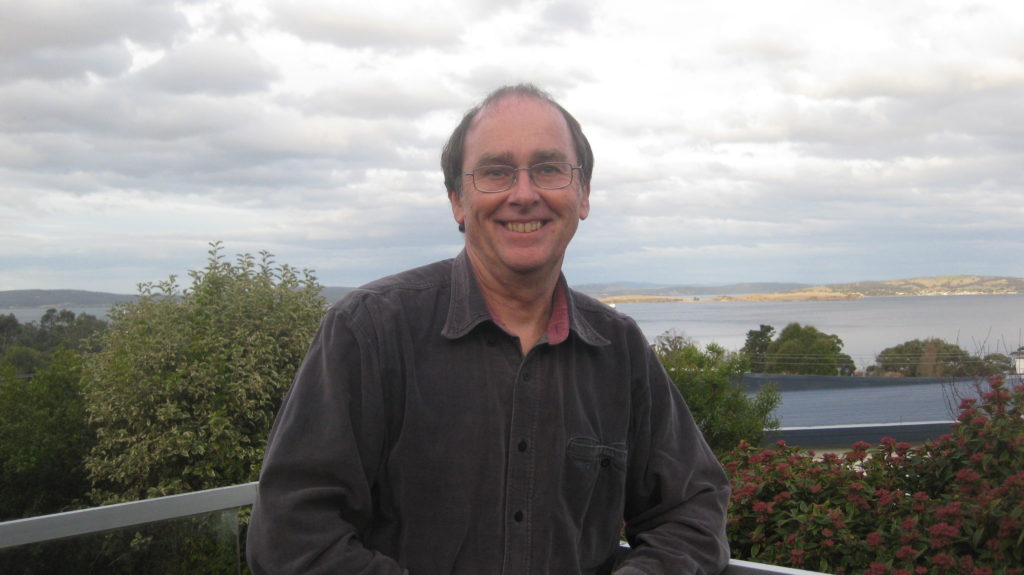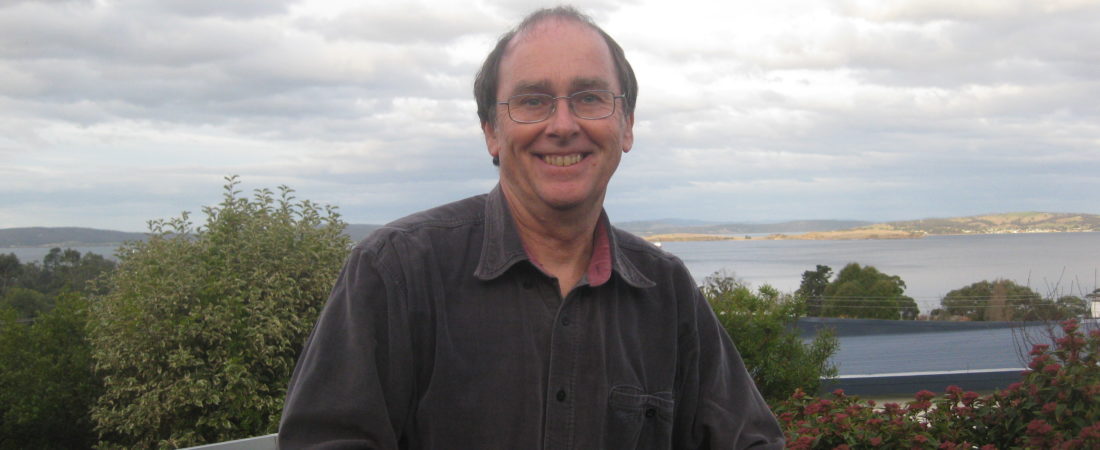Ric Finlay – The man behind the numbers
Posted on April 13, 2021
Ric recently provided his story to Mary Woolnough. Thank you to Ric and to Mary for this story.

I arrived at Pendle Hill in early 1965 as a boarder from the Campbell Town district, and spent four mainly productive years at the Friends’ School (Classes 8 to 11), which did most of the three schools I attended to set me up for my life. For family reasons, I spent the last two years of my school education in Launceston, mainly, I think to prevent me and my siblings being scattered all over the State at this time. Although I was part of a State Independent Schools premiership cricket side, the move certainly flattened the trajectory of my academic development, and it took me a while to “catch up” when I returned to Hobart for university study.
Anyway, it all ended well: I accepted a studentship from the Education department in return for a year’s compulsory employment at the end of my study, and after four years, I was posted to Burnie High School, happy to do my “bond” year and then perhaps look for something more exciting to do. In the event, the one year turned into 33 as I completed three of them at Burnie before returning to Hobart, and stints at Claremont High, Rose Bay High. I then embarked upon 20 years of teaching Mathematics at Hobart and Elizabeth Colleges, retiring from that profession at the earliest opportunity in 2008.
But not quite retiring from life. As a child, I had acquired what was probably considered to be an unusual fascination with cricket and its numbers, keeping records in exercise books which are probably still in the attic. The advent and more general accessibility of computers in the 1980s increased the possibilities exponentially of my hobby, and I was fortunate to team up with a teaching colleague, David Fitzgerald, at Hobart College in 1993 to develop a computer Test match database – he programmed the application (in DOS!), while my job was manually type around 1300 scorecards into it. This took the best part of a year, and so by 1994, we had a product which we could sell to what we thought would be a hobbyist market. As it transpired, it proved attractive to other cohorts, especially journalists and cricket associations, and later, television broadcasters used our data to provide statistical graphics for broadcasts.
We changed to a more modern Windows-based platform in around 2005, and expanded our offerings to include all international cricket formats, as well as first-class cricket in Australia and England. The women’s game followed soon after, an early investment that had little support in the initial stages, but one that has expanded rapidly with the increased popularity of that branch of the game. The T20 revolution resulted in further expansion, and despite losing my programming partner and friend David to illness in 2017, my application now takes in elite cricket in all the major cricket-playing countries around the world.
Unexpectedly, having this database, with its custom-built 2500 different searches, all subject to an infinite selection of filters and qualifications, led me into another career after my teaching one had ended. From 1983, through meeting with local ABC sports journalists Roger Wills and Peter Gee, I was given the job of scoring for ABC radio coverage of Sheffield Shield and Tasmanian one-day matches, and the occasional international match that was thrown Tasmania’s way in those years. When our database became available a decade later, my role in these productions increased significantly, since I was now able to contribute facts and figures in a timely fashion to the broadcast that wasn’t possible previously. The end of my teaching responsibilities in 2008 freed me up to travel, under my own steam, to the various Australians capitals to watch the cricket, and when a last-minute scorer’s vacancy, due to illness, occurred in a Brisbane Test, I was the on the spot to take over there. For a number of years afterwards, I would travel to Brisbane to do this job, but since it was ABC policy to employ a local scorer, the other venues (apart from Hobart) weren’t available to me. Gradually, ABC management came to realise the facility of my database as an excellent broadcast tool, and I now find myself working with them in all the Test matches in Australia each summer. So now, well into my seventh decade, I am in a situation that I would never have dreamed of all those years ago when filling out the exercise books, working a job that takes me to all Australia’s major cities in a two-month period of each summer. Working with such luminaries as Jim Maxwell, Jonathan Agnew, Harsha Bogle, Gerard Whateley and a host of retired Test cricketers as expert commentators, continues to be an absolute pleasure.
My private music teacher when at Friends’, Mrs Elaine Johnson, probably had much better students under her care, but although playing a piano remains much of a mystery to me, some of the theory she imparted has enabled me to enjoy my other passion, acappella singing. I remain a committed member of Hobart’s barbershop singing scene, and enjoy membership of a men’s chorus, and two quartets, one male, the other mixed, which normally takes me on at least one trip each year to the mainland, and in one case (2012), to America to represent Australia in the international senior’s barbershop singing competition. As with my cricket interests, early retirement has provided me with more opportunities to practice this art and to extract maximum satisfaction from it.
I was asked when preparing this discourse if there was any advice I would give to current students. Everyone, of course, beats their own path, but what has worked particularly well for me has been the decisions I made (both professionally and financially) to be able to retire as early as possible. Life need not end when the work stops; in my case, the last dozen or so years have probably been the best and satisfying of my life so far. If you can get into the position of being able to pursue passions, then do it as early as you can. It doesn’t last forever!
